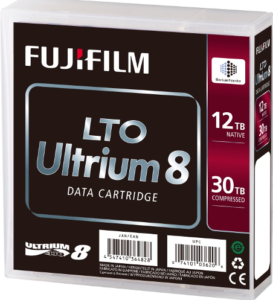Back to the Future: New-Old Tech Protects Data in the Zettabyte Age

By Peter Faulhaber
May 7, 2020
I’ve become accustomed to odd looks and lots of questions when I meet new people and tell them I’m in the data tape business. “Really? Tape? In 2020?” is a common response.
I can forgive some people — those who last touched a consumer VHS tape or audiocassette in the late 90s or early 2000s. I’ve come to really enjoy expanding their perspective, though, when I tell them that tape is a major workhorse in “the cloud” and that most of the household-name technology and internet companies are tape users. Business continuity, including several data protection applications is a big part of the reason why, along with tape’s low total cost of ownership and low energy consumption. I think we can all agree that economics and preserving the environment is key to continuity in its own right!
Information is Currency in the Zettabye Age
The worldwide datasphere is currently around 35 Zettabytes (that’s 35 billion Terabytes) and expected to be 175 ZB by 2025 — an estimated annual compound growth rate of 30%. The odds are good you’re seeing a similar rate of data explosion in your own business. Everything today is born digital, not just “structured” data like databases but “unstructured” data such as spreadsheets, documents, presentations, video, audio and photographs. Add to that the appliances and devices in the “Internet of Things” — smart vehicles, smart planes, smart phones, smart homes, factories and cities. Then add to the mix artificial intelligence, machine learning, ecommerce, email, social media, gaming, surveillance, VR, mobile and more – you can see the path we’re on.
We keep all this data around for years and sometimes decades because it is potentially valuable enough to justify archiving or keeping online in an active archive. Whether your business relies on archival video footage or photos, harvests data for sale to outside parties or uses information for internal streamlining, strategy, or planning, it’s become impossible to even imagine a modern business without data that is increasing in value.







 Last year was full of key milestones for the tape storage industry. The cost per terabyte and total cost of ownership (TCO) improved for tape-based storage and archive; tape became firmly entrenched in all of the major U.S. hyperscale data centers; and the tape “air gap” continued to be a compelling tool in combating cybercrime.
Last year was full of key milestones for the tape storage industry. The cost per terabyte and total cost of ownership (TCO) improved for tape-based storage and archive; tape became firmly entrenched in all of the major U.S. hyperscale data centers; and the tape “air gap” continued to be a compelling tool in combating cybercrime.